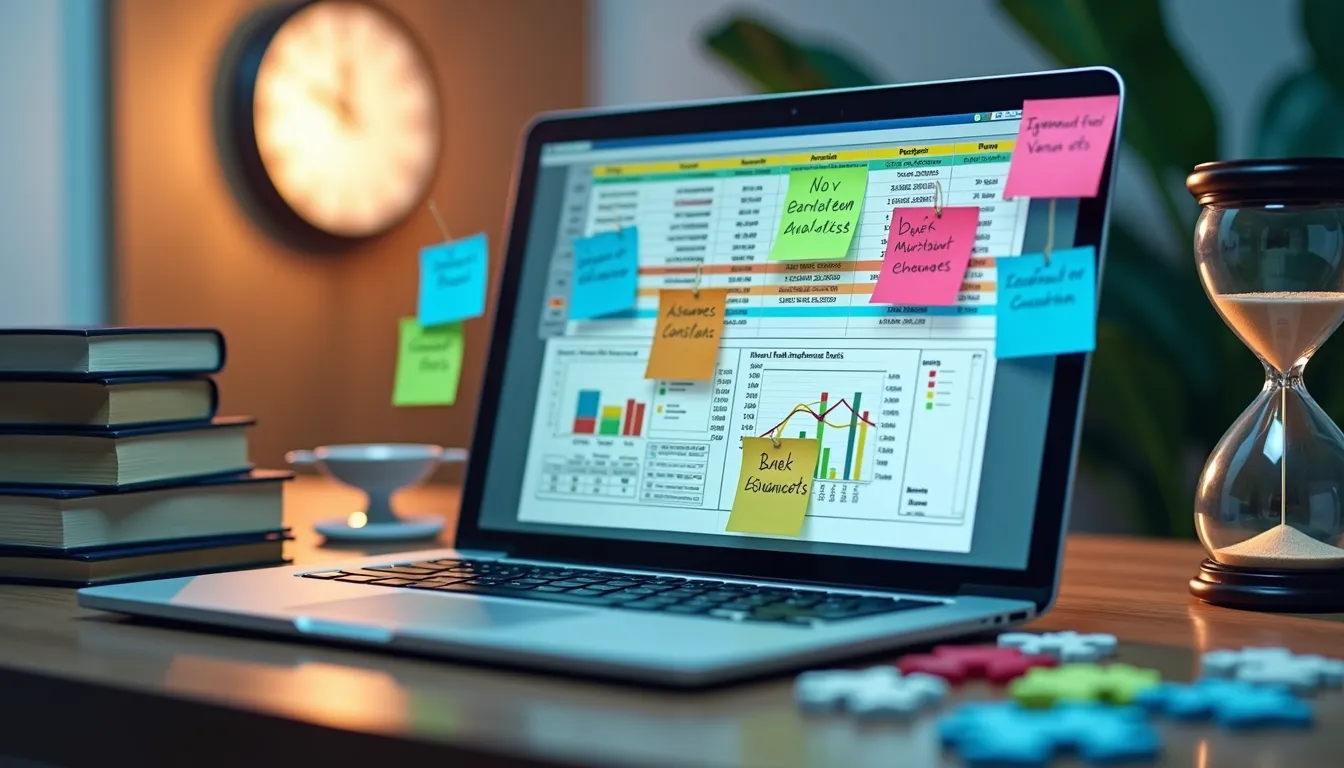Master Break-Even Analysis For Improve Profits This 2025

Break-even analysis helps you see when your business will start to make a profit. Knowing this is important for every business owner. Whether you sell products or services, understanding your break-even point can help you make smart choices. It tells you how much you need to sell to cover your costs and start earning money.
Key Takeaways:
- Break-even analysis shows when your business starts making money.
- Understanding fixed and variable costs is crucial.
- This analysis helps set better prices for your goods or services.
- It can guide you on how to adjust your expenses to improve profits.
- Regular reviews of your break-even point can help keep your business healthy.
- For more insights on managing your business expenses effectively, check out tips on cost control strategies.
What Is Break-Even Analysis?

Break-even analysis is a tool that helps you understand when your business will cover all its costs. It shows you the point where your income equals your expenses. At this point, you make no profit but also incur no loss. It is like a balance between what you sell and what you spend.
Why Use Break-Even Analysis?

Every business owner should use break-even analysis. It gives you clear numbers to guide your decisions. For example, if you know you need to sell 100 items to break even, you can set sales goals. This helps you to focus on what you need to do to make a profit.
Components of Break-Even Analysis

Understanding the parts of break-even analysis is important. Here are the main components:
1. Fixed Costs
Fixed costs are expenses that stay the same, even if you sell nothing. These include rent, salaries, and insurance. You must pay these costs no matter what.
2. Variable Costs
Variable costs change based on how much you sell. These can include materials and shipping. The more you sell, the higher these costs will be.
3. Selling Price
The selling price is how much you charge for your product or service. This number is key to figuring out when you will break even.
4. Contribution Margin
The contribution margin shows how much money you make from each sale after covering variable costs. It helps you understand how many sales you need to cover fixed costs.
How to Calculate Your Break-Even Point

Calculating your break-even point is simple. You can use this formula:
Break-Even Point (in units) = Fixed Costs / (Selling Price – Variable Costs)
Let’s break this down.
- Fixed Costs: Total all your fixed costs.
- Selling Price: The price you charge for one item.
- Variable Costs: The cost to make or deliver one item.
- Contribution Margin: Take the selling price and subtract the variable costs.
Example of Calculation
Imagine you run a bakery. Your fixed costs are 1 dollars,000 each month. You sell each cupcake for 5 dollars and it costs 2 dollars to make one.
- Fixed Costs = 1 dollars,000
- Selling Price = 5 dollars
- Variable Costs = 2 dollars
- Contribution Margin = 5 dollars – 2 dollars = 3 dollars
Now plug it into the formula:
Break-Even Point = 1 dollars,000 / 3 dollars = 333.33 cupcakes.
So, you need to sell 334 cupcakes each month to break even.
Using Break-Even Analysis for Pricing

Knowing your break-even point helps you set the right prices. If you see that you need to sell too many items to break even, you might want to increase the price. Or, if your prices are well above the break-even point, you can consider lowering them to increase sales.
Factors Influencing Pricing Strategies:
- Market demand
- Competitive landscape
- Customer preferences
- Economic conditions
Limitations of Break-Even Analysis

While break-even analysis is helpful, it has some limits:
- Simplicity: It assumes all costs can easily be divided into fixed and variable. But some costs can mix.
- Static View: Prices and costs can change. This analysis does not predict future changes.
- Sales Volatility: It does not account for changes in sales volume, which can affect profits.
Adjusting Your Break-Even Analysis Regularly

Regular updates to your break-even analysis are vital. Your costs and prices will change over time. Recalculating ensures you always know where your business stands.
What to Review
- Watch your fixed costs. If you move to a bigger place, your rent might go up.
- Keep an eye on variable costs. If sugar prices rise, your cupcake costs will go up too.
- Adjust your selling price based on market trends or competition.
| Cost Type | Description | Example |
|---|---|---|
| Fixed Costs | Costs that do not change with sales | Rent, Salaries |
| Variable Costs | Costs that fluctuate with sales | Raw materials, Shipping |
| Contribution Margin | Revenue remaining after variable costs | Selling Price – VC |
Real-Life Example: A Local Coffee Shop

Let’s say you own a coffee shop. Your fixed costs include rent, salaries, and utilities. If your fixed costs total 3 dollars,000 monthly and your coffee sells for 3 dollars, with variable costs of 1 dollars per cup, your break-even point would be:
- Fixed Costs = 3 dollars,000
- Selling Price = 3 dollars
- Variable Costs = 1 dollars
- Contribution Margin = 3 dollars – 1 dollars = 2 dollars
Break-Even Point = 3 dollars,000 / 2 dollars = 1,500 cups.
So, you need to sell 1,500 cups of coffee each month to break even.
| Scenario | Fixed Costs | Selling Price | Variable Costs | Break-Even Point |
|---|---|---|---|---|
| Bakery | 1,000 | 5 | 2 | 334 cupcakes |
| Coffee Shop | 3,000 | 3 | 1 | 1,500 cups |
| Online Subscription Service | 2,000 | 10 | 3 | 400 subscriptions |
Conclusion: Make Break-Even Analysis Your Friend
Break-even analysis is a powerful tool for any business owner. It helps you understand your costs and sales. With this knowledge, you can make better choices for your business.
Use break-even analysis to guide your pricing, manage your costs, and set clear sales goals. Keep your analysis updated as your business grows and changes. Remember, knowing your numbers is the first step to success.
Stay focused on your break-even point, and you will find it easier to build a profitable business.
By following these steps, you can master break-even analysis and use it to your advantage. Whether you’re just starting or have been in business for years, this analysis can help you stay on track and grow your profits. Remember, it’s all about knowing your costs and setting the right prices.
Let break-even analysis be your guide as you navigate the world of business. It can lead to smarter decisions and a stronger financial future. For an in-depth look at enhancing your pricing strategies, consider exploring effective pricing models.

Leave a Reply